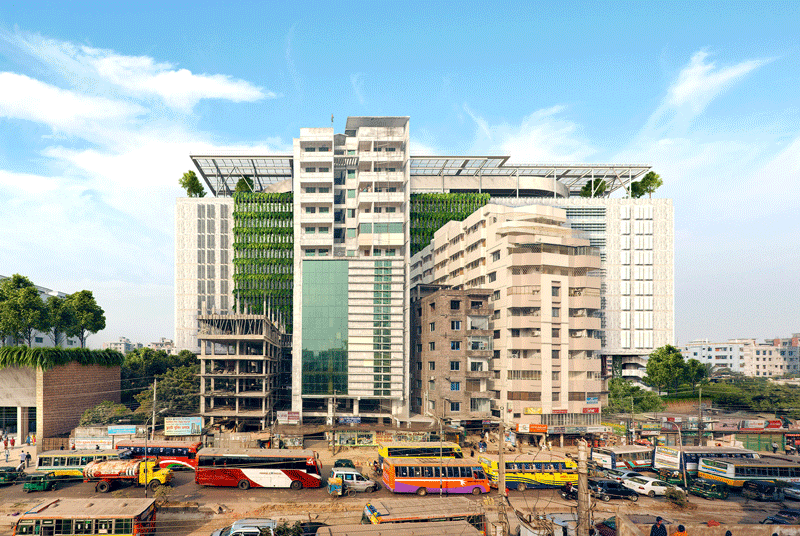Tall & Urban News
Latest Design Images Unveiled for University Campus in Dhaka

BRAC University has unveiled the latest images from the 5.3-acre (2.1-hectare) university campus, scheduled for completion in 2021. Located in Dhaka, Bangladesh, the intervention aims to transform a polluted and flooded area into a sustainable inner-city campus and public park.
Designed by Singapore-based architecture firm WOHA, the project aims to promote sustainable development in the region. Under construction since 2017, the 950,000 square-foot (88,000-square-meter) campus draws inspiration “from the region’s Sundarbans, which have separate ecosystems above and below tidal level.”
The design and the functions are divided into two bodies, “the private Academia raised canopy for learning and the ground-level public Campus Park created by remediating the existing polluted swamp into a bio-retention pond with lush native landscaping.” The campus that will host over 10,000 students, will have its Academia entity shelter the Campus Park from the sun and the monsoon rains.
Moreover, the public part will also include a gathering space for the University’s auditorium, multi-purpose hall, and public gallery. The roof, serving as the University Green will accommodate a recreational field, a swimming pool and a 200-meter running track under the shade of a large photovoltaic (PV) solar canopy. With a flexible structural model, spaces can be combined or subdivided, allowing for future resizing of the faculties.
“The new campus will provide an environment that is conducive to learning and human interaction and its integrated landscaping will enhance urban biodiversity. The design of the new building implements strategies that help to reduce waste as well as save energy and water,” said Richard Hassell, WOHA Co-Founder.
The new architectural and environmental strategies incorporated in the design will create “tropical learning spaces that do not require full air conditioning, while a matrix of sun-shading fins and vertical green walls address solar heat gain.” The green façades will act as environmental filters that cut out glare and dust, help keep rooms cool, and dampen traffic noise. Open and airy, the floor plans will facilitate cross ventilation and daylight in every classroom.
For more on this story, go to Arch Daily.
Featured Buildings
CTBUH Member Companies
(showing member level)
Transsolar Energietechnik GmbH
Related News
Get the Latest News and Updates from CTBUH
Fields with an asterisk (*) next to them are required.
View our privacy policy


